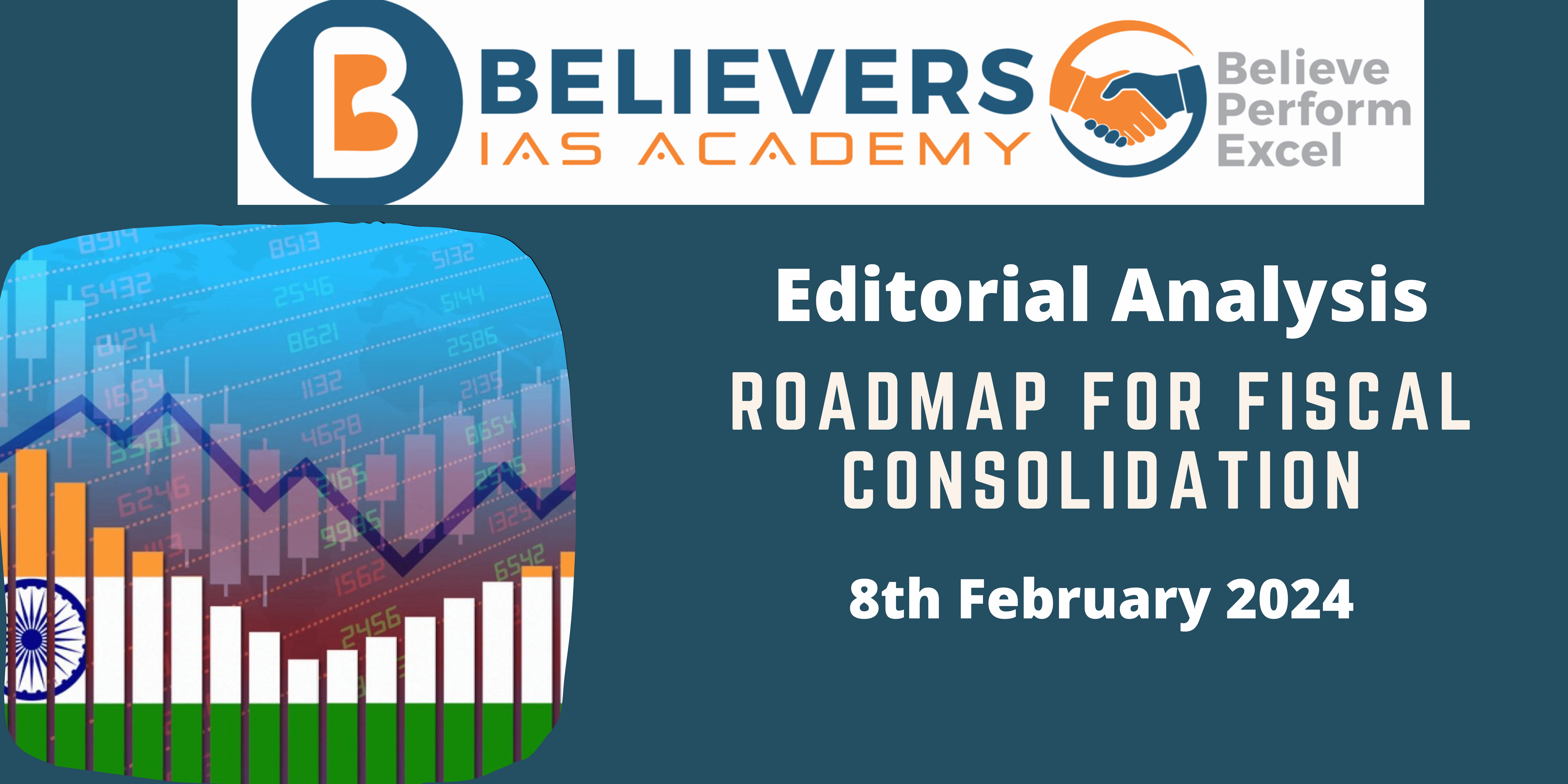Roadmap for Fiscal consolidation
Context:
The interim Budget for 2024-25, presented by Finance Minister Nirmala Sitharaman, refrains from altering tax rates but highlights increased capital expenditures and fiscal consolidation. This editorial delves into the implications and strategies outlined in the budget.
Relevance:
GS-03 (Economy, Growth and development, Budget)
Mains Question:
Evaluate the challenges and opportunities in achieving long-term fiscal sustainability, considering the dynamic economic landscape and evolving fiscal responsibility frameworks. (150 words)
Fiscal Deficit:
- Fiscal deficit refers to the difference between a government’s revenue and expenditure, requiring borrowing or asset sales to cover the shortfall.
- Taxation serves as the main revenue source, projected at ₹26.02 lakh crore for 2024-25, out of total revenue estimated at ₹30.8 lakh crore.
- Meanwhile, government expenditure is expected to reach ₹47.66 lakh crore for the same period.
What is the importance of Fiscal Deficit?
- High fiscal deficits could trigger inflation as governments might opt for printing money to bridge the deficit gap.
- Keeping deficits at lower levels can boost investor trust, resulting in improved bond ratings and decreased borrowing costs.
- Excessive fiscal deficits may strain the management of public debt, possibly increasing India’s total debt load.
- Reduced fiscal deficits facilitate international borrowing, allowing governments to issue bonds overseas and access cheaper credit options.
Dimensions of the Article:
- Strategic Fiscal Planning
- Capital Expenditure Prioritization
- Fiscal Deficit Reduction
- Fiscal Responsibility Framework
- Long-term Fiscal Objectives
Strategic Fiscal Planning:
- Despite maintaining tax rates, the budget showcases prudent fiscal planning.
- The buoyancy of tax revenue, coupled with nominal GDP growth estimates, provides flexibility for future expenditure adjustments or deficit reductions.
- The emphasis on fiscal correction and consolidation reflects a cautious approach to economic management.
Capital Expenditure Prioritization:
- The budget sustains the trend of augmenting capital expenditures of the Union government.
- This aims to stimulate investment climate, potentially catalyzing private sector participation.
- With an 11.1% increase in capital expenditures compared to the previous year’s budget estimates, the budget underscores the government’s commitment to infrastructure development.
Fiscal Deficit Reduction:
- A significant aspect of the budget is the projected reduction in the fiscal deficit to 5.1% for 2024-25, reflecting a decrease of 0.7 percentage points from the preceding year.
- This aligns with the Finance Minister’s earlier assertions. However, achieving this target necessitates a comprehensive roadmap to ensure sustainable fiscal management.
Fiscal Responsibility Framework:
- Discussion revolves around the desired fiscal deficit targets, particularly aiming for 3% of GDP for the Central government and not exceeding 6% of GDP when combined with State governments.
- The rationale behind these targets is intricately linked to household savings, net inflows from abroad, and the imperative to manage debt-GDP ratios effectively.
Long-term Fiscal Objectives:
- Setting a clear trajectory for fiscal consolidation is imperative, with a target to reach a fiscal deficit of 3% of GDP for both the Centre and States.
- The timeline for achieving these targets must be carefully delineated to mitigate inflationary pressures and ensure sustainable economic growth.
Conclusion:
The interim Budget lays a foundation for prudent fiscal management, emphasizing capital expenditure enhancement and fiscal deficit reduction. However, achieving long-term fiscal sustainability requires concerted efforts, including aligning fiscal policies with economic realities and establishing clear targets for deficit reduction.




